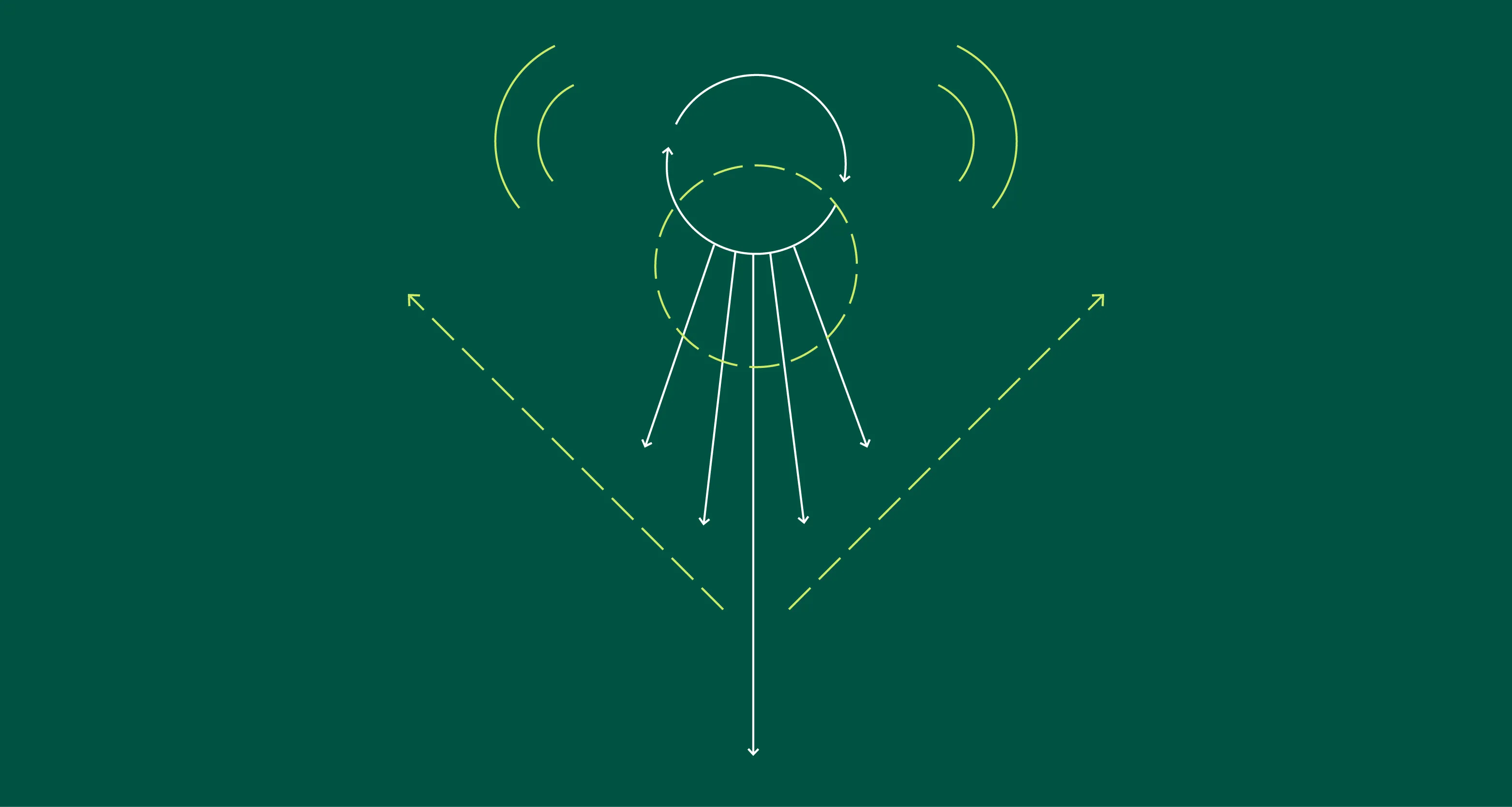Is AR in retail a gimmick or a strategic tool?

In 2017, the IKEA Place app was launched. The idea was simple: let people see the furniture pieces in their own homes and empower them to easily decide if they want to buy it or not. Thanks to augmented reality (AR), customers could easily figure out if that coffee table or an armchair would be a good fit in their living space.
The IKEA Place app enabled users to place authentic 3D models of furniture pieces in their homes or office spaces with a swipe of a finger. From a technical standpoint, the app was well-built. It automatically scaled products based on the room dimensions. Additionally, customers could see the texture of the fabric and even details such as light and shadows.
This was revolutionary for the way people buy, but did it make a business impact? Absolutely. According to Appifycommerce, furniture returns decreased by 20% while online sales increased by 35%.
There is validation that AR in retail works. But let’s take a closer look at why that is the case and how your eCommerce or brick-and-mortar store can benefit from it.
Understand AR to realize its potential
We’re living in the attention-deficit era, which means you need to level up your game to earn the attention of your target audience. With content saturation and advanced personalization, consumers are getting bombarded with offers pretty much all the time.
Although it might sound counterintuitive, it's not just about the quality of your products. It’s about the experience you create from the very first touchpoint. Sometimes it’s even more about this than your product-related unique selling proposition. If you’re still skeptical about whether or not it’s worth investing in AR for your eCommerce, here’s some reassurance.
Like with any type of new technology that has wide applications, first there is some resistance, then there are early adopters, and then it becomes the norm. And once AR becomes the norm, implementing it into your retail business is not how you gain a competitive edge; it’s how you deliver on the bare minimum in terms of consumer expectations.
According to Snapchat’s report, by 2025, nearly 75% of the global population and almost all smartphone users will be frequent AR users. It’s a forecast based on the growth trajectory since the beginning of the century. It’s not hard to understand why AR is continually gaining more popularity.
The technology enhances the real world by adding real-time digital content to real-life objects. It’s kind of like a “widened” reality. Users simply point their cameras at an object, and the built-in AR software will use a combination of depth tracking and computer vision to recognize the space and overlay digital content on top of it.
Because it’s very simple and intuitive to use, and it implies no learning curve at all, AR can be a powerful tool for retail brands. You just have to figure out what type of experience you want to offer your customers and invite them to have fun.
Ensure engagement from the get-go
If you’re in your thirties right now, you belong to a generation that witnessed the switch from the analog to the digital world during their most formative years. You probably nostalgically remember the sounds of the dial-up Internet and the annoyance if somebody picked up the landline phone just when your Internet Explorer finally loaded.
What happened in the first decade of the 2000s was an incredible acceleration of technological developments. Needless to say, the Internet transformed the pace of progress. The new tech-first world was the one inhabited by the next generations, also known as digital natives.
Unlike older generations, who were probably thrilled by getting a discount at their local shop or loyalty rewards in the form of complementary products, digital natives have different (and higher) expectations. They expect engagement from the get-go.
What’s interesting is the nature of the dynamics within the consumer ecosystem and how different generations of buyers influence one another. If the expectations bar gets raised by one generation, other ones get curious about new experiences as well. In that context, AR is there to strengthen the relationship you have with your customers – across multiple demographics.
Apple’s CEO Tim Cook pointed out that AR is yet to show its true strength and that the technology will be universally used across all demographics, just like smartphones are:
I regard AR as a big idea, like the smartphone. The smartphone is for everyone, we don’t have to think the iPhone is about a certain demographic, or country or vertical market: it’s for everyone. I think AR is that big, it’s huge. I get excited because of the things that could be done that could improve a lot of lives.
In other words, AR is relevant for all generations, not just Gen Z.
Examples of AR in retail
You know what they say – stand on the backs of the giants, and you’ll see more and go further. In that spirit, let’s look at some of the best AR in retail examples and then extract lessons on the benefits of using this technology in your business.
Starbucks: Coffee as theater
If you want to grab a cup of coffee, your expectations are somewhere along the lines of not getting served a cold one when you asked for a hot cup and the barista delivering on the promise of the advertised taste. But what if you were extended an invitation to explore the journey of a coffee bean?
In 2017, Starbucks launched its first in-store augmented reality experience. Shanghai’s citizens and visitors had the opportunity to stand in front of the roasting cask at the first Starbucks Reserve Roastery in Asia. To embark on the digital journey of finding out more about the precious history of coffee beans, all customers had to do was put up their phones to it.
Customers could watch an animated version of newly roasted beans dropping into a cask. Not only that, but they would learn about the way these beans get turned into Starbucks coffee they love.
Why this worked: Through AR, Starbucks invited customers to participate in the experience and erased the line between the brand and consumers. This effectively transforms an otherwise transactional relationship into a warm, human one. Starbucks customers came in for a cup of coffee, but they left with a positive impression of the brand and a story that connected them to their favorite beverage.
Benefit: Use AR to build stronger bonds with your customers and give them a reason to come back to your store (whether it’s online or a brick-and-mortar store). Make it fun for your customers and exceed what they get from you.
GOAT: Try before you buy
Sneakers are tricky to buy online. Will they fit nicely? Will they be comfortable? Will you feel a spring in your step and smile just by looking at your feet?
Many footwear brands have already standardized the level of comfort and fit depending on the model series. For example, if you wear New Balance sneakers and now want to buy a new pair, there’s not going to be any surprises. The models get changed in terms of design, of course, but the technology stays more or less the same.
Over 2 billion people bought footwear online in 2023. The potential to sell this type of merchandise online is huge, but you also need to think about what’s causing friction in the buying journey for your customers.
GOAT tapped into this issue but with an even broader focus on building buzz around their brand and creating a community. In 2019, they launched the AR-powered “Try-On” that allowed people to try on sneakers using AR, “including a range of the rarest Nike Dunks, Air Force 1s, and unreleased samples”.
Why this worked: GOAT created excitement for around 20 million users by enabling them to put on any pair of sneakers through AR. Paradoxically, they’ve managed to create a feeling of exclusivity at scale. You wouldn’t normally have the opportunity to try on rare Nike models or unreleased series. Thanks to the incredible engagement, GOAT took advantage of the hype and let users place bids on shoes from sellers. The monetization model was simple – they would just collect the commission (9,5%) on every transaction.
Benefit: AR allows you to remove friction points for your customers and give them what they need to make a purchase decision. It’s not just about encouraging purchases, though. It’s also about creating excitement around your product and encouraging people to invite their friends to try it out. Give them an opportunity to connect with you and your products without leaving their homes.
L’Oreal: Virtual hair and makeup try-on
Switching up the way you look, especially if it’s a more radical change, is not a decision to be made on a whim. Typically, you would browse pictures online looking for inspiration, but each person is unique – from skin tone and face contours to eye shape and color, and more.
To increase the chances of being satisfied with the new version of you that you’re set to create, L’Oreal used AR to help out. Their virtual hair and makeup try-on allows people to try out different hair colors and makeup styles before deciding on the look they’ll go for.
L’Oreal tapped into the real issue of people (women in particular) leaving hair salons unsatisfied because of the gap between expectations and reality. Celebrating women by empowering them with the “look into the future” is how the company managed to significantly increase sales. It has been reported that “customers who virtually tried on beauty products were three times more likely to purchase them”, which resulted in a 52% increase in overall sales for L’Oreal.
Why this worked: When it comes to changing the way we look, there is some anxiety and fear attached to how the transformation will pan out. L’Oreal not only removed this anxiety from the equation, but added fun and excitement about trying out new styles thanks to the power of AR. This is the encouragement consumers need to buy hair dyes and makeup.
Benefit: In use cases similar to the one of L’Oreal, AR is powerful in a sense that it lifts the heaviness of imagining the better world off from your customers’ shoulders. In other words, you are metaphorically bringing the future to them, and reassuring them in the quality of your product. Moreover, you are making their experience toward getting that “aha” moment more immersive, and this brings your brand incredible strength.
How your retail can implement AR
From increasing how immersive shopping experiences feel to leveraging personalized AR and virtual try-ons, there are a lot of creative ways you can try to implement augmented reality in retail. Let’s take a look at the most popular use cases.
Virtual shopping
Thanks to AR, users can overlay digital products such as clothes or accessories directly on their bodies in real time. That’s what’s called virtual shopping. For example, users can see how a T-shirt they like would look like in their real-life surroundings, assess the color, and get a closer idea about the fit. In most cases, all they would need is a smartphone camera.
Some of the brands that are already profiting from the AR-powered virtual try-on experiences include Ray-Ban, Nike, Kendra Scott, and Amazon. With proper AR technology in place, this is how you can encourage people to buy your products. Enable them to try what they like without going to the physical store.
It’s not just about the virtual try-ons, though. You can also use AR to:
- Gamify the experience for your customers by letting them complete certain milestones to receive a reward or a discount
- Present your product information in a more compelling way by allowing your customers to see relevant reviews or other types of social proof that would help you build trust with them from the get-go
- Create interactive catalogs and let customers discover additional information, 3D models, or hidden gems that will help them better understand your offer and feel engaged while embarking on the journey
Virtual navigation
If you want to increase engagement in your physical retail store, AR can be a great ally. Imagine your store is in a large, crowded shopping mall. There might be signs for visitors, but with so many advertisements, how could you rise above the noise?
With AR navigation systems, you can direct customers around your store or even turn the entire experience into a scavenger hunt through AR wayfinding, point-of-interest information, and indoor navigation.
AR will provide your customers with interactive navigation, including digital cues like arrows and markers. These can appear on user’s screens, helping them navigate through any type of public space.
You can also use AR to communicate nearby points of interest, e.g. your store name or promotions you offer. All users need to do is point their devices at specific areas. That’s the power of providing contextual information to potential customers.
Additionally, augmented reality overcomes GPS limitations indoors. In contrast, AR relies on positioning systems. These systems guide users through shopping centers or other public buildings, supporting navigation use in areas where GPS may not be as effective.
In-store displays
According to research, in four out of ten stores they visit, shoppers make an average of three impulsive purchases. To maximize purchases, retailers can use AR windows and digital in-store displays to build upon the buying intent. Additionally, AR technology would allow retailers to measure the effectiveness of their campaigns and messaging. This cannot be said for most OOH campaigns.
AR displays may track and gather real-time analytical data while offering customers fun new ways to interact with adverts. Additionally, unlike static billboards or bus ads, AR displays are dynamic and can be modified to iterate based on data gathered over time. So yes, personalized AR advertisements are also possible.
Interested in AR for your retail business?
Specifically, because AR offers so much fun and interaction for customers, it’s becoming one of the highest-growing technologies for eCommerce and brick-and-mortar stores alike. If you always flirted with the idea of adding AR to improve your customer experience but didn’t know where to start, we have just the thing.
Our extensive expertise in AR and VR implementations, together with eCommerce, allows for seamless integration of AR/VR solutions within virtual and physical stores. Whether you're a retailer looking to dominate the eCommerce space, or a developer crafting tailor-made solutions for the retail landscape, we're here to support your ventures. Get in touch with Vega IT today, and let’s transform what shopping means.









